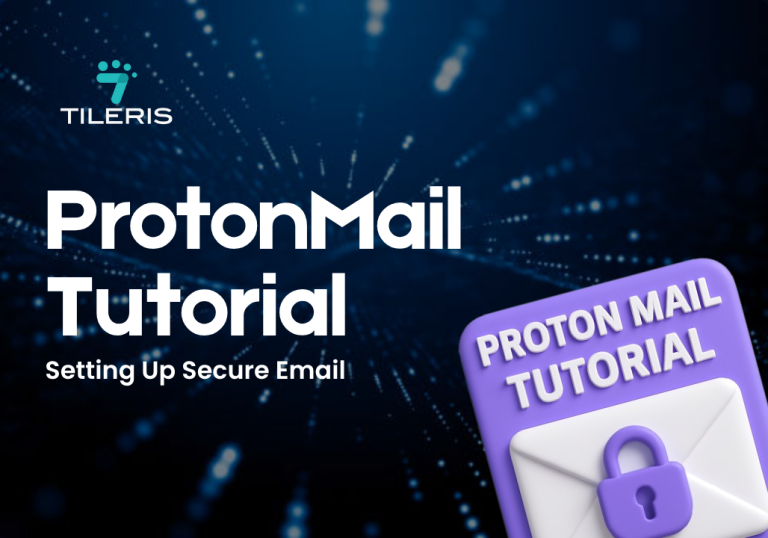Public Key Infrastructure (PKI) for Email Security
Introduction
Imagine sending a crucial business proposal, financial details, or a private message to a loved one via email. You hit “send,” and off it goes, traveling across the internet. But how do you know it’s truly private? How can you be sure no one’s peeking at its contents, or that the sender is actually who they claim to be? In a world where email is the lifeblood of communication for individuals and businesses alike, ensuring your email’s security is paramount. This is where Public Key Infrastructure (PKI) steps in. A powerful, yet often misunderstood, technology that acts as your email’s digital guardian. This article will unravel the complexities of PKI, showing you how it fundamentally protects your email communications.
What is PKI? Your Digital ID System
At its heart, Public Key Infrastructure (PKI) is a system for creating, managing, distributing, using, storing, and revoking digital certificates. Think of it as the internet’s official “ID card” system, ensuring that people, devices, and data are truly who they claim to be, and that communications stay private.
Its core components are:
- Public and Private Keys (The Lock and Key):
- Public Key: This is like an open padlock you can give to anyone. Anyone can use your public key to encrypt a message for you, or to verify a digital signature that you created. It’s openly shared.
- Private Key: This is the only key that can unlock the padlock locked with your public key, or create digital signatures that can be verified by your public key. It’s secret and must be kept secure. Together, these form a key pair, what one key locks, only the other can unlock.
- Digital Certificates (The Digital ID Card): A digital certificate is like a digital ID card. It’s an electronic document that cryptographically binds a public key to an identity (like a person, organization, or server). It contains information about the key owner, the public key itself, and is digitally signed by a trusted authority. It proves that a specific public key truly belongs to the person or entity it claims to represent.
- Certificate Authorities (CAs) (The ID Card Issuers): A Certificate Authority (CA) is a trusted third party that issues and manages digital certificates. They are like the passport office of the internet. When you want a digital certificate for your public key, you apply to a CA. The CA verifies your identity, then digitally signs your certificate, vouching for your public key’s authenticity. Examples include DigiCert, Sectigo, and often government bodies or large corporations running their own internal CAs.
How PKI Works for Email Security: The Secure Digital Handshake
PKI enables secure email communication through a combination of encryption and digital signatures.
- Key Pair Generation and Distribution:
- First, each user generates their unique public and private key pair on their computer or via a secure system.
- The public key is then submitted to a CA to be embedded in a digital certificate.
- Digital Certificate Issuance and Management: The CA verifies the user’s identity (e.g., confirming their email address, sometimes even their physical identity for higher assurance). Once verified, the CA issues and digitally signs the user’s digital certificate, binding their public key to their verified identity. This certificate is then published (often in a public directory) and/or shared with trusted contacts.
- Email Encryption and Decryption using Public and Private Keys:
- Sending a Secure Email (Encryption): If you want to send a private email to someone, you use their public key (found in their digital certificate) to encrypt the message. Only their private key can decrypt it, ensuring only they can read it.
- Digitally Signing an Email (Authentication & Integrity): If you want to prove you sent an email and that it hasn’t been tampered with, you use your private key to create a digital signature for the message. The recipient then uses your public key (from your certificate) to verify that the signature is valid and the message hasn’t been altered. This provides authenticity and integrity.
Benefits of PKI for Email Security: Why It’s a Game-Changer
PKI isn’t just a fancy tech term; it delivers tangible, powerful security benefits for your email.
- Authentication and Verification of Email Senders (Who are you, really?): Through digital signatures, PKI allows the recipient to confirm that the email truly came from the claimed sender and not an impostor. This is critical in combating phishing and Business Email Compromise (BEC) scams.
- Encryption of Email Content to Prevent Interception (Keep it Private): Only the intended recipient, possessing the corresponding private key, can decrypt and read the email. This protects the content from being intercepted and read by unauthorized parties during transit, crucial for sensitive business or personal communication.
- Non-Repudiation of Email Messages (You Can’t Deny It!): When an email is digitally signed, the sender cannot later deny having sent it. The digital signature acts as irrefutable proof of origin, which can be vital in legal or business disputes.
Implementing PKI for Email Security: Getting Started
Setting up PKI for email security might sound complex, but it’s manageable with a clear approach.
- Choosing a Certificate Authority (CA):
- For individual use, some email providers (e.g., Microsoft Outlook with S/MIME) or dedicated services might offer free or low-cost personal certificates.
- For organizations, you’ll need to choose a reputable commercial CA (e.g., DigiCert, Sectigo, GlobalSign) or, for large enterprises, consider setting up an internal CA for greater control.
- Generating and Distributing Public and Private Keys: Keys are typically generated on the user’s device (e.g., within the email client or via a dedicated tool). The public key is then submitted to the chosen CA for certificate issuance. Private keys must be kept secure on the user’s device, often protected by a strong password or hardware token. Public keys (within certificates) are shared.
- Configuring Email Clients to Use PKI: Most modern email clients (like Microsoft Outlook, Mozilla Thunderbird, Apple Mail) support S/MIME (Secure/Multipurpose Internet Mail Extensions), a standard that uses PKI. You’ll need to import your digital certificate into your email client and configure it to use your private key for signing and encryption. This often involves a simple setup wizard.
Challenges and Limitations of PKI: The Roadblocks
While powerful, PKI does come with its own set of hurdles.
- Complexity of PKI Implementation and Management: Especially for large organizations, setting up and maintaining a robust PKI system can be technically demanding, requiring specialized knowledge and ongoing administration.
- Cost of Obtaining and Managing Digital Certificates: While personal certificates can be free, commercial certificates for organizations, especially those requiring high assurance, can be costly. Managing renewals and revocations adds to the administrative overhead.
- Interoperability Issues Between Different PKI Systems: Sometimes, digital certificates issued by one CA might not be fully trusted or compatible with systems that primarily recognize certificates from another CA, leading to potential “trust chain” issues and user frustration.
- User Education and Adoption: For PKI to be effective, users must understand how to use it correctly – how to sign emails, how to encrypt, and how to manage their private keys securely. This requires consistent training.
Best Practices for PKI Email Security: Maximizing Your Protection
To get the most out of PKI and keep your emails truly secure, follow these best practices:
- Using Strong Key Sizes and Algorithms: Always opt for the strongest recommended key sizes (e.g., 2048-bit or higher for RSA keys) and modern cryptographic algorithms to ensure your encryption and signatures are resilient against brute-force attacks.
- Implementing Secure Key Management Practices: Your private key is your digital identity. Keep it secure!
- Store private keys on hardware security modules (HSMs) or secure USB tokens where possible.
- Protect private keys with strong, unique passphrases.
- Never share your private key.
- Regularly Updating and Revoking Digital Certificates:
- Renewal: Certificates have expiration dates. Renew them well before they expire to avoid service disruption.
- Revocation: If a private key is compromised or an employee leaves the company, immediately revoke their digital certificate to prevent its misuse. Check Certificate Revocation Lists (CRLs) or use Online Certificate Status Protocol (OCSP).
- Integrating with Email Security Gateways: For businesses, combine PKI with a robust email security gateway that provides spam filtering, malware scanning, and data loss prevention, offering a multi-layered defense.
Conclusion.
In an era dominated by digital communication, securing your email is no longer a luxury but a fundamental necessity. Public Key Infrastructure (PKI) stands as a cornerstone of this security, offering unparalleled mechanisms for authenticating senders, ensuring message integrity, and encrypting confidential content. While its implementation might present some challenges, the benefits of trust, privacy, and non-repudiation it offers are invaluable.
By understanding PKI’s components, carefully planning its implementation, and adhering to best practices, individuals and organizations can significantly fortify their email security. Consider integrating PKI into your email strategy to protect your communications and build a more trustworthy digital environment.
To learn more, visit tileris.com






